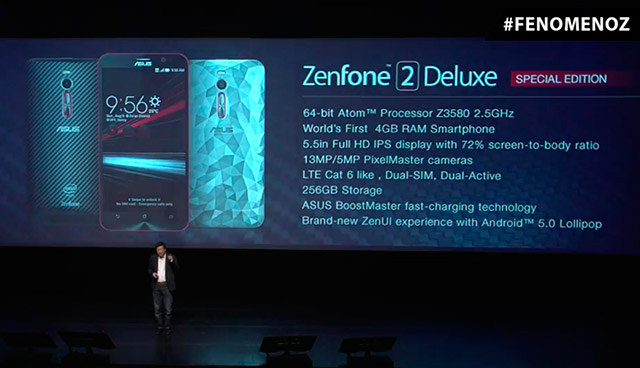As far as I’m concerned the talk about a “Post-PC” area is just that: talk. As long as the hardware specifications of smartphones don’t match the ones of entry-level computers, and mobile operating systems don’t support a desktop mode, desktop PCs will still be popular, and I can see it everyday as 60 to 70% of visits of this very blog are made with Windows, Linux and Mac OS computers. However, that’s not to say mobile and desktop converge is not getting closer, as on the software side, Canonical is working on bring Ubuntu to different form factors and support desktop mode for mobile desktop, and Microsoft is also working on Continuum, and on the hardware side, Asus announced a smartphone with 256 GB storage and 4GB RAM, which is pretty close to the specifications of an entry-level computer these days.

Asus Zenfone 2 Deluxe Edition specifications:
- SoC – Intel Atom Z3580 quad core processor @ up to 2.5 GHz with PowerVR G6430 GPU
- System Memory – 4 GB RAM
- Storage – 256 GB internal storage + micro SD slot up to 128GB
- Display – 5.5″ IPS display (Full HD)
- Camera – 13MP and 5MP PixelMaster cameras
- Connectivity – 802.11 b/g/n/ac, Bluetooth 4.0, NFC, GPS, FM radio
- Cellular Connectivity – LTE cat 6, dual SIM, dual active (DSDA).
- USB – Micro USB OTG port
- Sensors – G-Sensor/E-Compass/Gyroscope/Proximity/Ambient Light Sensor
- Battery – 3,000 mAh
- Dimensions – 152.5 x 77.2 x 10.9 mm
- Weight – 170 grams
The specs are impressive and based on Zenfone 2 Deluxe, just with more storage. However, the phone runs Android Lollipop, and appears to lack HDMI and/or MHL support, so it’s probably not something you’d run as a desktop replacement just yet.
Zenfone 2 Deluxe will sell for 1,999 Brazilian Reals ($560) with 128GB storage, but price for the “Special Edition” with 256 MB storage is not known at this stage.
Via XDA Developers and Asus Fanaticos

Jean-Luc started CNX Software in 2010 as a part-time endeavor, before quitting his job as a software engineering manager, and starting to write daily news, and reviews full time later in 2011.
Support CNX Software! Donate via cryptocurrencies, become a Patron on Patreon, or purchase goods on Amazon or Aliexpress




